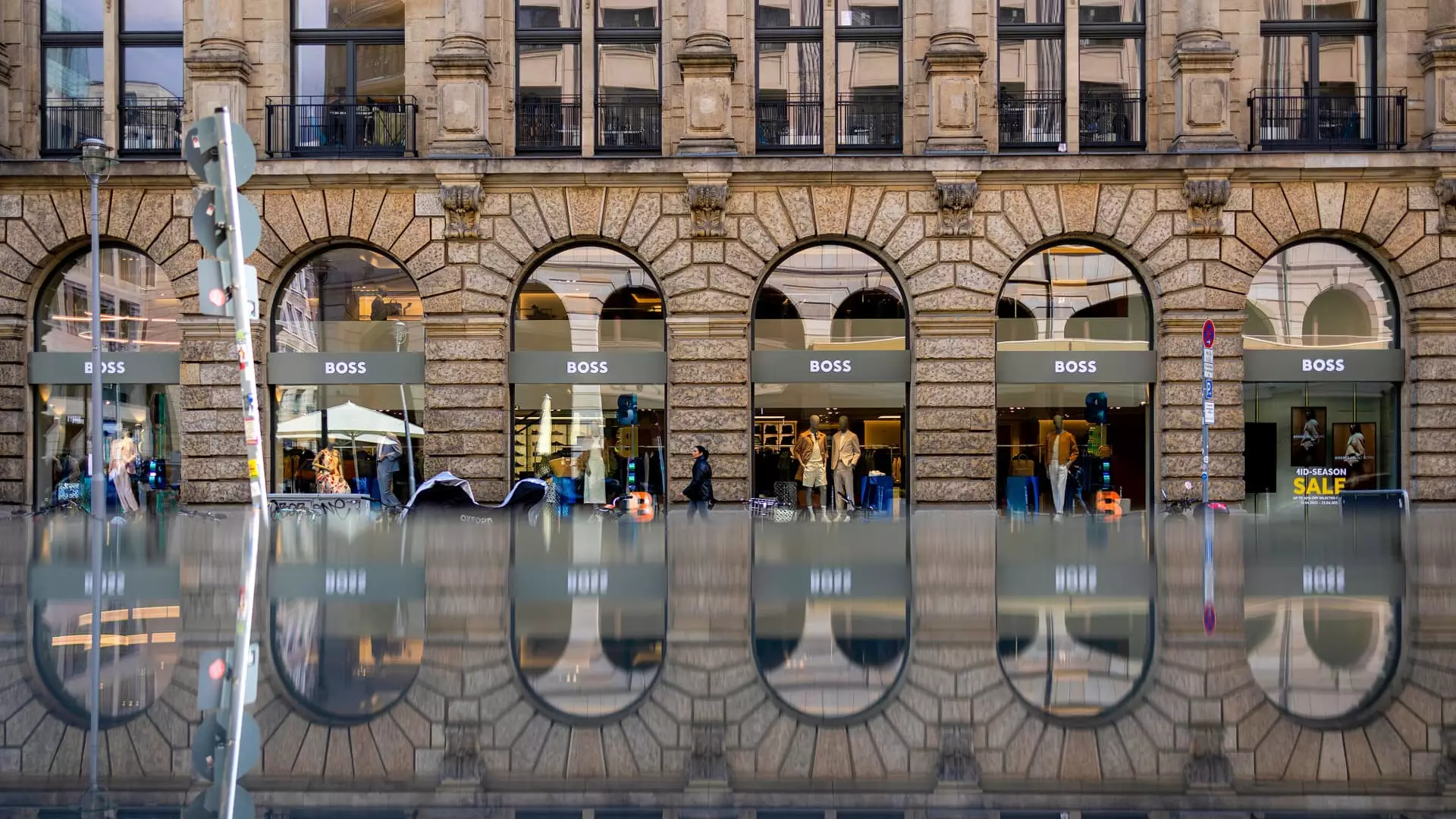On a seemingly ordinary Tuesday, shares of Hugo Boss experienced a remarkable surge—an 8.8% jump that sent ripples through the financial landscape. Investors were buoyed by the luxury retailer’s announcement of first-quarter sales that were less alarming than initially anticipated. The German brand managed to generate revenues of 999 million euros, slightly exceeding projections. These numbers raise important questions about not just the specific circumstances of Hugo Boss, but also about the broader marketplace in which it operates. They serve as a litmus test for how luxury brands are handling macroeconomic uncertainties and evolving consumer preferences.
While a 2% decline in revenue isn’t ideal, the market response suggests a prevailing culture of low expectations. In a time when many companies are facing significant slowdowns, achieving slight better-than-expected performance is enough to elicit enthusiasm among investors. While this speaks to a potential silver lining, it may also highlight a disturbing complacency where even modest success is seen as a victory. It’s a curious juxtaposition of optimism amidst the storm of economic uncertainty.
Asia-Pacific’s Strident Challenges
Hugo Boss’s struggles can primarily be traced back to decreasing demand in the Asia-Pacific region, particularly in China, which was cited as a major factor for the revenue drop. The overarching narrative surrounding Chinese consumer confidence remains stark; ongoing geopolitical tensions and uncertainties have created a palpable tightening of wallets. It is this intersection of socio-political factors and consumer behavior that creates a precarious balance for companies like Hugo Boss.
CEO Daniel Grieder pointed out that the company is closely monitoring these fluctuations, invoking a standard corporate line that feels somewhat hollow amid a world ordering its priorities differently. The company’s weak performance in Asia—traditionally a stronghold for luxury brands—raises concerns regarding its adaptive strategies. If Grieder hopes to persuade stakeholders of a bright future, a more robust plan addressing this key market’s challenges is essential. Simply echoing concerns without actionable steps feels like a missed opportunity.
U.S. Tariff Tensions Loom Large
In a global market that is increasingly sensitive to economic disruptions, the presence of U.S. tariffs adds an additional layer of complexity for Hugo Boss. The brand, while enjoying significant success in the U.S. market—which accounts for about 15% of its revenue—finds itself navigating treacherous waters. Tariffs not only impact supply chains; they also damage consumer sentiment and confidence.
While Grieder openly acknowledged the impact of fluctuating tariffs during an earnings call, one can’t help but wonder if his proactive measures are sufficient. The idea of redirecting goods from China and optimizing sourcing could be commendable, but these sound more like Band-Aids on a bullet wound rather than genuine solutions that could insulate the business from broader economic challenges. This “reactive instead of proactive” attitude undermines the urgency that is desperately needed in navigating the looming risks.
Strategic Overhaul in a New Era
Despite current challenges, Hugo Boss is intent on reinventing itself, pushing a new strategic agenda aimed at revitalizing consumer demand. There’s an acknowledgment of the need to evolve beyond traditional formal wear and embrace a more diversified offering tailored to a younger audience. This revival plan may bear fruit, as indicated by slight improvements in the first-quarter performance.
Still, as analysts like Yanmei Tang suggest, the women’s wear division remains an area of concern. The absence of a clear strategic direction in an essential segment could stymie growth ambitions among savvy competitors. This is where strategic acquisitions could play a pivotal role. Invigorating the brand with established players could not just enhance diversification but also provide valuable market insights that align with evolving consumer tastes.
The Paradigm of Consumer Engagement
Engaging younger consumers is no longer merely advantageous—it’s a requirement for survival. Stylish and socially conscious, younger demographics are dictating the pace of the luxury fashion market. Hugo Boss’s recent efforts to attract this audience through enhanced product differentiation and improved store formats seem commendable, but they appear to be mere ripples in a vast ocean of consumer expectations.
It’s clear that the brand still has significant work to do to align itself with the values and preferences of newer generations. If it hopes to cultivate lasting relationships with consumers, a paradigm shift from transactional to experiential retail must take precedence. This sequel of consumer engagement will be essential if the brand aspires not just to survive, but to thrive in an increasingly competitive and volatile market.

